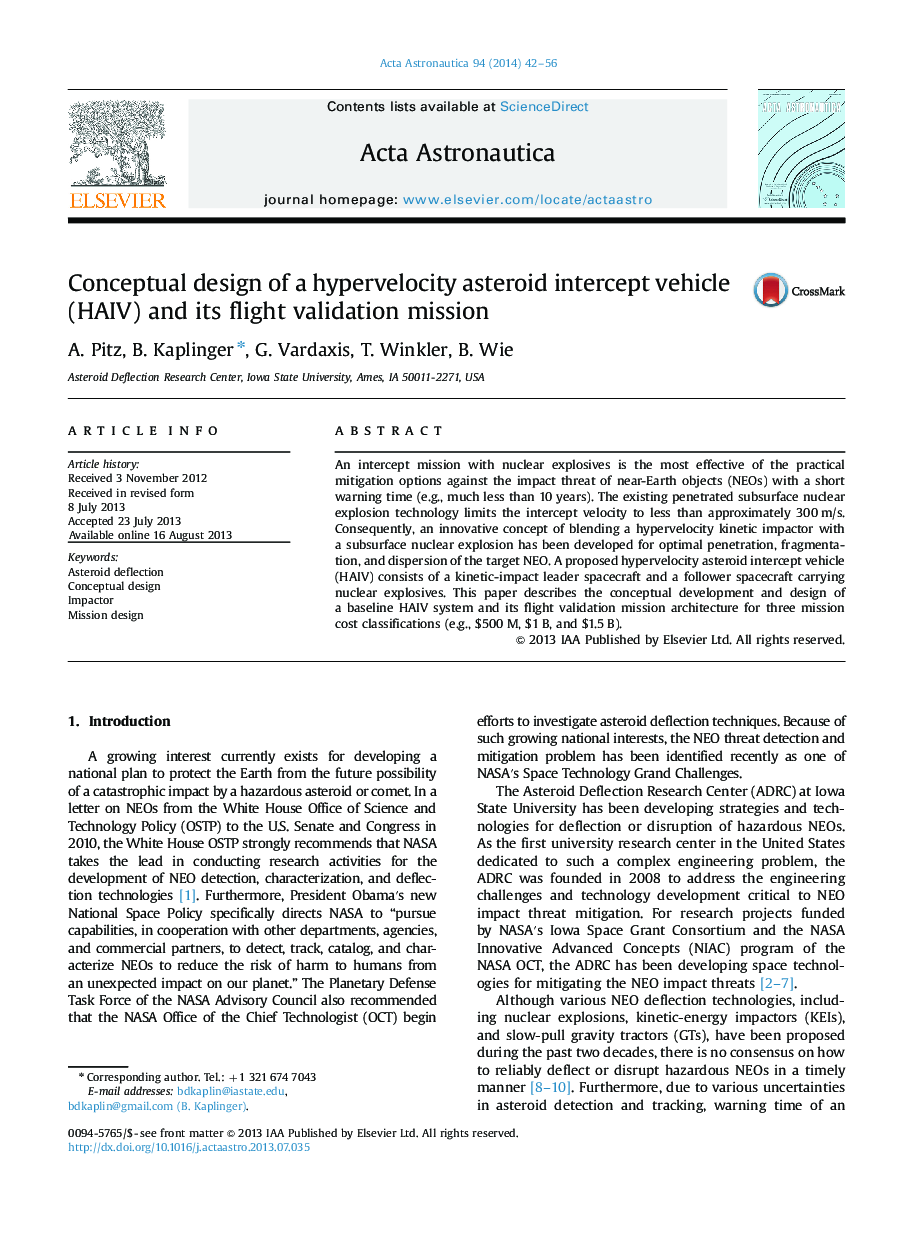| Article ID | Journal | Published Year | Pages | File Type |
|---|---|---|---|---|
| 10680817 | Acta Astronautica | 2014 | 15 Pages |
Abstract
An intercept mission with nuclear explosives is the most effective of the practical mitigation options against the impact threat of near-Earth objects (NEOs) with a short warning time (e.g., much less than 10 years). The existing penetrated subsurface nuclear explosion technology limits the intercept velocity to less than approximately 300Â m/s. Consequently, an innovative concept of blending a hypervelocity kinetic impactor with a subsurface nuclear explosion has been developed for optimal penetration, fragmentation, and dispersion of the target NEO. A proposed hypervelocity asteroid intercept vehicle (HAIV) consists of a kinetic-impact leader spacecraft and a follower spacecraft carrying nuclear explosives. This paper describes the conceptual development and design of a baseline HAIV system and its flight validation mission architecture for three mission cost classifications (e.g., $500Â M, $1Â B, and $1.5Â B).
Related Topics
Physical Sciences and Engineering
Engineering
Aerospace Engineering
Authors
A. Pitz, B. Kaplinger, G. Vardaxis, T. Winkler, B. Wie,
